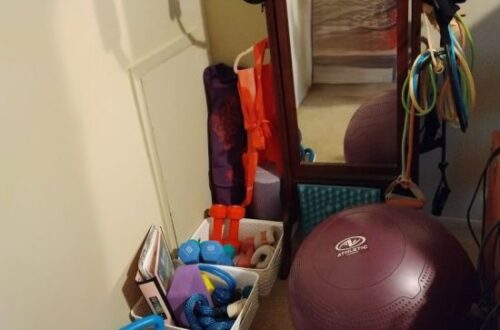Understanding Foot Pain and Finding the Right Fit
Understanding Plantar Fasciitis
Plantar fasciitis is a prevalent condition that leads to pain in the heel and the underside of the foot. This occurs when the plantar fascia—a thick band of tissue that stretches from the heel bone to the toes—becomes inflamed.
The pain is often most intense in the morning or after prolonged periods of sitting or standing. Several factors can increase the risk of developing this condition, including obesity, wearing inappropriate footwear, engaging in high-impact activities, and certain foot structures, like flat feet or high arches.
Common treatments for plantar fasciitis include rest, ice application, stretching exercises, physical therapy, orthotic inserts, and anti-inflammatory medications. In some instances, more advanced interventions, such as corticosteroid injections or surgery, may be necessary.
Is It Plantar Fasciitis or Poor Footwear?
It could be a mix of both! While plantar fasciitis primarily relates to the plantar fascia, unsupportive or poorly fitting shoes can worsen the problem. Shoes that lack adequate arch support or cushioning can place additional strain on the plantar fascia, leading to further inflammation and discomfort. If you’re experiencing symptoms, it might be helpful to examine your footwear as part of your solution.
The Impact of Flat Feet
Having wide and flat feet can indeed play a role in developing plantar fasciitis. Flat feet, or fallen arches, can put extra strain on the plantar fascia since the lack of arch support can lead to increased stretching and stress on the tissue. This can heighten the risk of inflammation and pain. If you have flat feet, investing in supportive shoes or orthotics tailored for flat arches can help reduce some of that strain and lower your risk of developing plantar fasciitis.
What If the Pain Is on the Top of Your Feet?
If you’re feeling pain primarily on the top of your feet, it may not be plantar fasciitis, as that condition generally affects the heel and the bottom of the foot. Pain in this area can result from several issues, including:
- Extensor tendonitis: Inflammation of the tendons on the top of your foot.
- Stress fractures: Tiny cracks in the foot bones due to overuse or repetitive strain.
- Nerve entrapment: Conditions like tarsal tunnel syndrome, where nerves may become compressed.
- Metatarsalgia: Pain in the ball of the foot that may radiate.
Consulting a healthcare professional is advisable to get an accurate diagnosis and tailored treatment plan based on your specific symptoms.
A Personal Experience with Podiatry
Walking into a podiatrist’s office and seeing the Dremel can be unsettling. The extremely brief (30 seconds tops) talk from the podiatrist was inadequate. When considering cortisone shots, one wonders where that path leads. If they grind my feet with the Dremel, what’s the recovery time? I was surprised that no one asked about my flat or wide feet.
Even when I was younger, whenever I got roller skates, the Pro Shop guy knew how to align my boots on my plates to best fit my feet. I just checked the bottom of my boots for my art (artistic) skates and speed skates, and they have hand-drawn alignment lines on them from the Pro Shop people.
After leaving the podiatrist, I visited a small business store recommended by a friend. There, I spoke with Paul (the owner, perhaps?) for way longer than I had with the podiatrist. Paul was familiar with the doctor and understood my frustrations. He took the time to assess my feet properly and helped me try on several pairs of shoes before finding the perfect fit. Since then, I’ve worn those shoes consistently. Until I mistakenly ordered the wrong size from Zappos, I’ve stuck with that same pair!
The shoes I wear are Brooks Addiction Walker 2. Here is a website that has cut the shoe in half and goes in-depth for their review.
The small business store is Runnin’ Gear.
Fitness Challenge Foot Health Tips
Choose the Right Footwear
Invest in well-fitting, supportive shoes designed for your specific activity, whether it’s running, walking, or weightlifting. Proper footwear helps prevent injuries and provides stability.
Warm Up and Stretch
Always warm up your feet and ankles before exercise. Incorporate stretching exercises for the calves, Achilles tendon, and the plantar fascia to improve flexibility and reduce the risk of strains.
Gradually Increase Intensity
If you’re ramping up your fitness routine, do so gradually. Avoid sudden increases in distance or intensity to give your feet time to adapt and prevent overuse injuries.
Pay Attention to Pain
Listen to your body. If you experience pain in your feet or ankles, don’t push through it. Rest and assess the issue, and consult a healthcare professional if necessary.
Incorporate Foot Exercises
Add specific foot and ankle exercises to your routine, such as toe curls, heel raises, and ankle rotations. These can strengthen the muscles in your feet and improve overall stability.
By following these tips, you can protect your feet and enhance your performance during your fitness challenge!





5 Comments
Martha
My granddaughter and I just started going to the gym and I’m also walking minimum 2 miles but try for 3 per day. When I get sneakers I usually wear them for 5- 6 years or until they are totally worn out. HOWEVER, I just bought 2 new pair of Sketchers (my favorite) at buy one get 2nd pair half off. So these I use just for walking and exercising. I do foot and ankle stretches before walking and next month I’ll be doing a 3 mile walk for Alzheimer’s so I need my feet and me in shape! My problem is nighttime cramps in my feet! Thanks for the great information.
Jodi
Hi Martha, I recommend discussing your nighttime foot cramps with your doctor. You found a great deal on your Sketchers! Before I switched to Brooks shoes, I wore Red Wings, which really hurt my feet and gave me bunions. Since getting rid of the Red Wings, the pain has improved. I haven’t had foot cramps in a while, but I still experience leg cramps, often due to dehydration. At one point, I kept mustard by my bed; when I woke up with cramps, a tablespoon of mustard would sometimes relieve them better than a banana. A health food store recommened that I try Hyland’s Leg Cramps, and that has helped stop them but didn’t prevent them. Definitely consult your doctor!
Barbara Clayton
I have to admit that I don’t take very good care of my feet. I need to delve into this more.
Nadya
So timely!
I’m a massage therapist, so over the last 4 decades years have helped many clients address foot pain, in harmony with their other healers.
This fall I’ve been wrestling with plantar fascitis in my Rt foot – and have been doing many of the things you mentioned – exercise, stretches, an acupuncture session, massage, my supplements (inc magnesium and niacinamide) …
I got new shoes with my daughter’s help – she looked up info on the one that felt/ fit the best (Her hubby coaches cross country, and just helped her choose good walking/ daily is shoes!)
I pulled up a video on gua sha for plantar fascitis and began doing the suggested treatment on my lower legs (some on the foot)
And –
I just began using a castor oil pack on my right foot overnight!
3 days in, and I love it! (Organic and hexane free)
Those first steps in the AM are still dicey – but throughout the day, there’s just an occasional twinge – after just 2 days!
I’m excited to incorporate this ancient and timeless treatment, and share the info with my clients! And I’m seeing what else it can help – I’m also using some my face and abdomen at night.
Jodi
Your son-in-law and my running store expert share a common trait—they’re not motivated by commissions, so they genuinely prioritize finding the best fit for us. I love that you’ve added gua sha to your routine! I’ve only used it on my face, but I’m curious to try it for my legs and feet as well. The castor oil pack seems like a wonderful addition—it’s great to hear it’s already making a difference in such a short time!